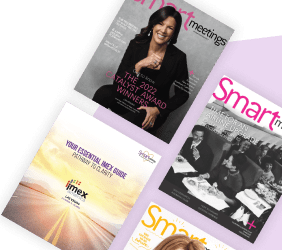Even the best planned events can fall prey to emergencies. And whether this emergency is an active shooter, a natural disaster or a medical issue, those responsible for the event are responsible for the well being of all attendees and speakers.
The secret to handling an emergency well is preparing to communicate effectively. This communication plan can’t be determined in the heat of the moment. The following three steps can aid in developing an effective emergency communication plan to keep everyone at an event safe.
Compile Contact Info in Advance
You can’t communicate if you don’t have the basic information that allows you to reach every attendee.
More: Advice from Emergency Management Experts
Unless your event is small enough that all attendees will be in the same small room at all times, you probably need more than a loudspeaker. Because cell phones are so prevalent, collecting phone numbers of each attendee is an easy way to ensure that you can communicate with everyone.
This information needs to be stored somewhere digitally so that it can easily be used to contact everyone at once if necessary. Whether this means collecting this information in advance or entering it into a database upon check-in, it’s important that it’s completed as soon as everyone is together.
Pre-record Messages for Specific Situations
It can be difficult to get a message across once an emergency is actually occurring.
One way to avoid stumbling over a message in the heat of the moment is to record some messages in advance. The goal here is to determine what emergency situations are most likely. For example, if your event is in Florida during hurricane season or held in a high profile location in Washington D.C., the messages can refer to hurricanes or terrorist-type attacks respectively.
These messages can be typed to be sent out as mass text messages or recorded to be sent as voice broadcasts.
Create Avenues For 2-Way Communication
During an emergency, those in charge aren’t the only ones that need to be able to convey information to others. It can also be beneficial to open up avenues of communication for event attendees to keep organizers up to date with information specific to an individual’s location or perspective.
More: The Essential Emergency Plan Checklist
This can be accomplished via a well-publicized shortcode, a hotline, or polls sent via voice or text. They can be used to gather information about traffic conditions, damaged buildings, the location of an active shooter or any other pertinent information.
Once information is shared with event organizers, they can share it with local law enforcement, first responders and other attendees.
Ready, Set…Go!
Creating an emergency action plan for your event can seem daunting, but it’s important to recognize that the key is communication.
Compiling info in advance, and even recording messages in advance, allows you to convey important information as soon as possible. Providing attendees with a way to reply or provide their own information allows you to stay up to date and keep other attendees up to date.
These three steps prepare you to efficiently handle any emergency that could disrupt your event, keeping organizers and attendees safe.
Brooklin Nash writes about the latest tools and tech trends for DialMyCalls. When he’s not writing, you can find him reading YA dystopian fiction (with guilty pleasure) and cooking.



